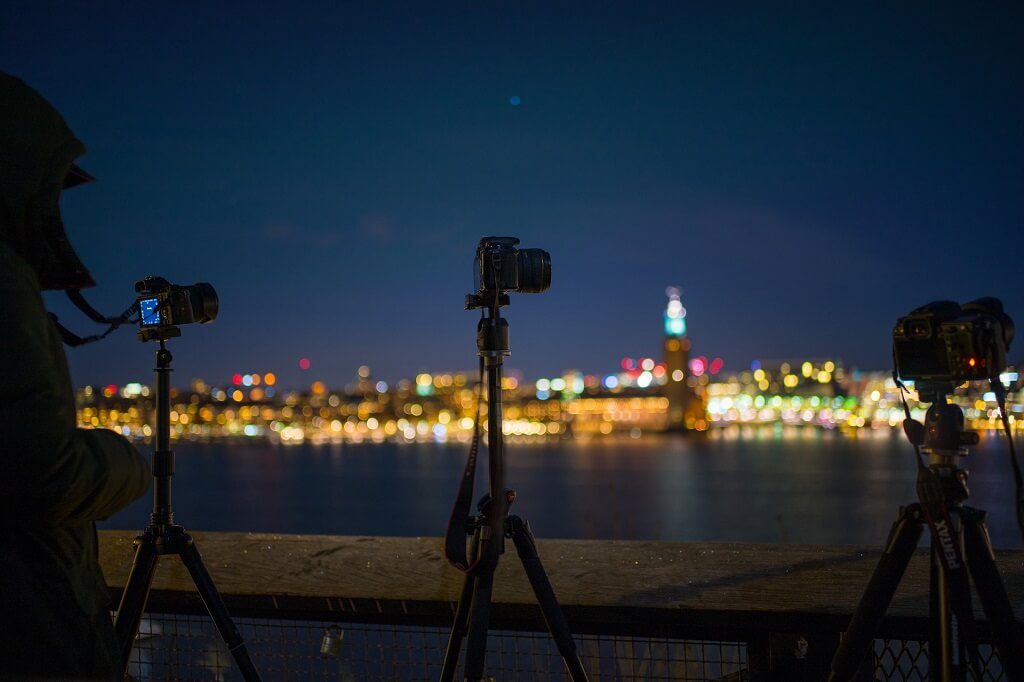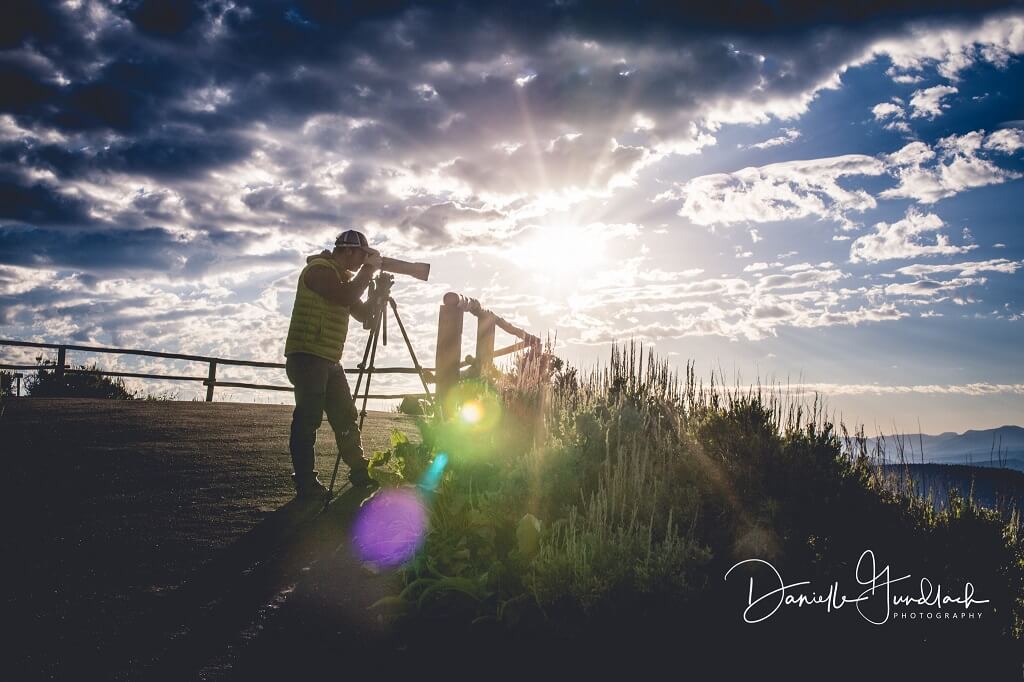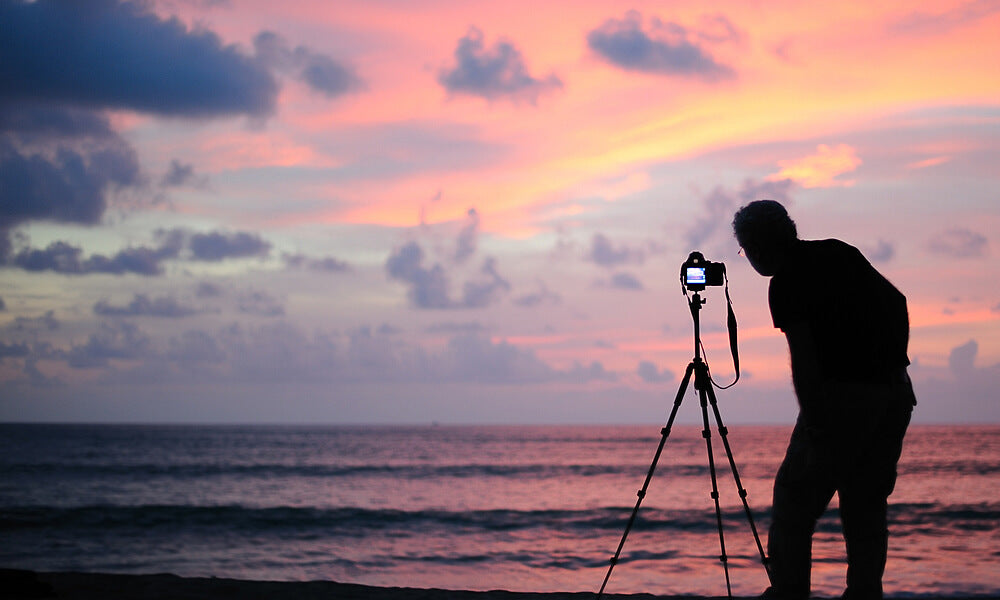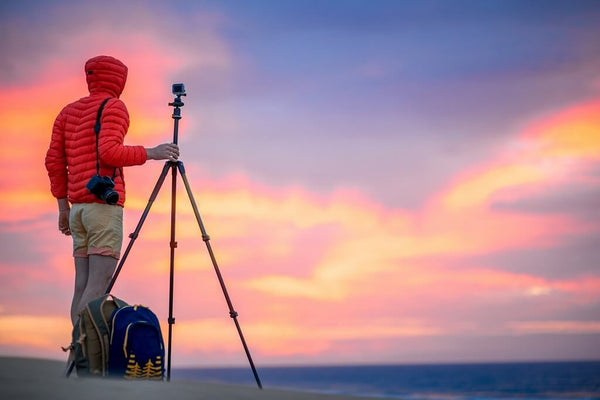
One of my favorite pieces of equipment is my tripod. I have incredibly shaky hands, and if I’m shooting anything slower than 1/60th, I will end up with a blurry photo, no matter how hard I try to hold my camera steady!
I wanted to write a post about tripods for anyone who shares my problem, and in doing some research for this post, I concluded: there is a lot of (often very confusing) information out there about tripods.
So in this post, I’m going to condense all the information down to a few essential factors that will help you select a tripod.
Why Use a Tripod?
There are hundreds of reasons why a tripod can be extremely useful, but here are some examples of why and when to use a tripod:
- To prevent camera shake and blur in your photos – having a tripod will ensure that your images will be sharp and will give you the option to shoot at a low ISO to minimize the noise in your photos.
- As a support system for heavy camera/lens setups – if you are on a long shoot and have a heavy set-up, you may find it helpful to put your camera on a tripod. Again, this will prevent camera shake when your arms get tired from carrying your camera.
- If you want to take photos at night and/or long exposures, a tripod is a necessity to prevent blur from camera movement.
- When shooting macro photography, achieving tack-sharp focus is extremely important. Having your camera on a tripod will help you frame your shot and keep the focus exactly where you need it when you press the shutter release.

How to Choose a Tripod
If you’re shooting macro photos of flowers in your kitchen, you should be able to get by with a basic, inexpensive tripod. However, if you’re a landscape photographer and often find yourself on location, you will need something more sturdy.
The process of selecting and purchasing a tripod can get a bit overwhelming. Don’t worry, though. Just keep these four criteria in mind as you are making your selection:

1. Height
Determine how high — and how low to the ground, you will need your tripod to reach to achieve the type of look you’re going for.
Also, consider your own height – if you are tall, you will need a tripod that extends high enough to comfortably use without having to hunch over. Many tripods also come with a center leg that will allow you to increase the height.
2. Weight
If you’re going to be doing a lot of walking with your tripod, you may want to consider a lightweight material such as carbon fiber or aluminum. Keep in mind, though, that carbon fiber tripods are the lightest but tend to be on the pricier side. Aluminum is much less expensive and only slightly heavier than carbon fiber.
3. Stability
Stability is an important factor depending on your camera’s weight and the terrain on which you will be using your tripod. The locks on the tripod legs come in either a flip lock or a twist lock. I prefer the twist lock, as I have found that sometimes the flip locks do not lock in all the way, and my camera slowly sinks, making a long exposure blurry due to the movement.
It is also important to consider the type of feet on a tripod. I do a lot of shooting outdoors, so the feet on my tripod are rubber with a metal spike to secure them to the ground.
4. Mobility
The ability to move your camera to various angles on your tripod is essential, especially in portrait photography. The tripod head is what allows you to move your camera around.
Two of the most common types of heads are pan-tilt and ball.
- A pan-tilt head has handles that allow you to move your camera to either portrait or landscape (vertical/horizontal). This is the most common type of tripod head and is found on most lower-end tripods.
- The ball head allows a bit more flexibility and is generally more expensive. These heads usually do not have handles but do have a control to loosen the head as you move your camera into the desired position.

Putting It All Together
Just like any other photography equipment, as long as you consider how you will use the tripod, you will find it much easier to make a good selection.
If you don’t currently use a tripod, you may want to consider a low-price, basic tripod to see how you like it. Then, if you find that it becomes an essential piece of equipment for you, consider investing in a higher-quality tripod. Here’s a short list of popular tripods from Amazon:
Do you have any questions or comments about How to Choose a Tripod? Leave us a comment below – we would love to hear from you! And PLEASE SHARE our tutorial using the social sharing buttons (we really appreciate it)!
Source link






Leave a Reply